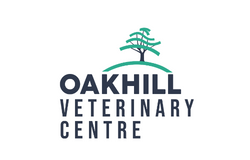Parasite management at housing time
At this time of year parasites take on a dormant state and “overwinter” within the stomach lining. It is important to remove this inhibited stage of the parasite because if left they can cause significant damage and disease when they emerge en masse in spring. Affected animals develop rapid clinical signs of weight loss, scour and dehydration, which may be fatal.
Parasites which survive over winter in the stomach lining will contribute to larval pasture burdens when they emerge the following spring.
1st and 2nd season grazed youngstock
This age group are most susceptible to gut and lung worms as cattle have not had time to develop a protective immune response until after their 2nd grazing season. Treat all youngstock at housing with a Group 3-ML (clear drench/injection/pour-on – ivermectin e.g. Enovex) that will remove all inhibited larvae. Avoid Group 1-BZ (white drenches – albendazole, fenbendazole) and Group 2-LV (yellow drenches – Levamisole) products are these will not remove all inhibited larval stages
The winter housing period will soon be upon us, which means that many of you will now be planning to treat your animals for gut parasites. Purchasing worm and fluke products can be a bit of a minefield, but this guide aims to help you choose the most appropriate product for your stock. The aim being to effectively remove parasites whilst minimising the likelihood of selection for resistance.
Purchased 1st lactation dairy/ 1st lactation beef cattle
The immune status of these animals is unknown with respect to lungworm. It is worth paying particular attention to this group of animals and treating them if they are coughing or under conditioned. Dairy cattle can be treated with an eprinomectin product (e.g. Eprizero -zero milk withdrawal). A Group 3-ML (e.g. Enovex) would be a good choice in beef cattle.
Adult dairy/beef cattle
Adult cattle should not require any treatment for gut worms as they will have built up protective immunity. However, it may be beneficial to perform faecal egg counts in any animals in poor condition so that they can be treated if necessary.
All age groups
Cattle (and sheep) are unable to develop a protective immune response to fluke infection. Therefore fluke control should encompass all ages of cattle. A bulk milk test can be used to monitor the infection level in milking herds and faecal tests can be used to test individual or small groups of animals.
In contrast to sheep, cattle typically only suffer from the chronic form of fluke infection. After a dry summer like we have just had, even if autumn is wet, cattle will only be harbouring immature flukes at the time of housing. Therefore, it is best to wait at least 10 weeks before treating with a product which targets adult fluke (e.g. Distocur). A nice job to look forward to at Christmas time!
Products containing Oxyclozanide (e.g. Distocur) or albendazole (e.g. Tramazole) may be used in milking herds (usually at dry-off) as they have a short milk withhold (Oxyclozanide = 108hrs and albendazole = 60hrs). Resistance to triclabendazole is becoming more widespread. Whenever possible we should avoid the use of triclabendazole products in cattle as this drug targets immature fluke which are more significant in sheep.
Combination products
Combination products are more costly as you are paying for the “convenience” of a 2-in-1 product. However, it is often the case that the two drugs which are combined should not ideally be given together at housing.
For example, if you used a product containing ivermectin and closantel at housing, you will remove all worms, but very few fluke as closantel will only kill fluke that were ingested over 7 weeks ago. Therefore, another fluke treatment would be needed later on. If you waited until the cattle had been housed for at least 7 weeks before dosing they will have carried their worm burden for an extra 7 weeks+. Adult cattle do not need treating with combination products as their worm burden will be low and does not require treatment. So overall, combination products are a more costly option and may increase the risk of resistance to these drugs.
